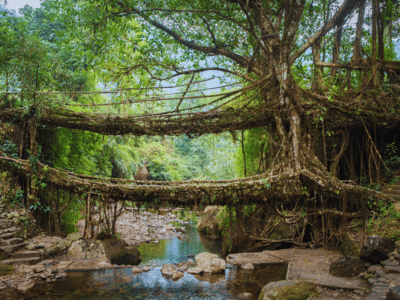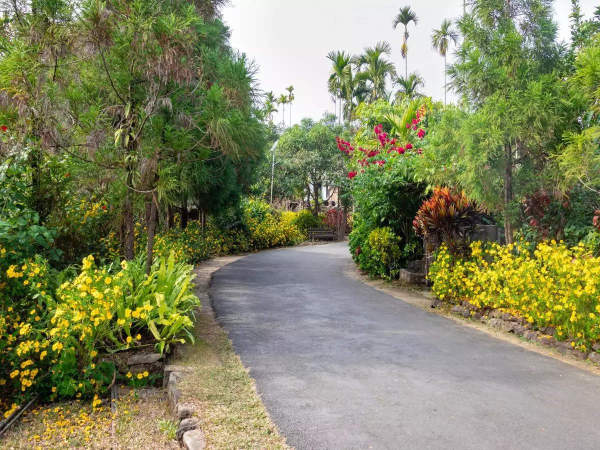
Living root bridges are a remarkable example of bioengineering that may be seen deep within the lush woods of Meghalaya, one of the most rain-soaked regions in India. The Khasi and Jaintia tribes built these magnificent constructions, which are evidence of the peaceful coexistence of people and the natural world. These bridges, which are not only functional but also an essential component of the local ecology, are "grown" over decades utilising the aerial roots of the Ficus elastica (Indian rubber tree), in contrast to traditional bridges built of concrete or wood.
A marvel of natural engineeringIt's interesting to note that the technique of creating these live root bridges has been passed down to generations. Bamboo scaffolds are used by the Khasi and Jaintia cultures to gently guide rubber tree roots across rivers and streams. Over time, the roots become increasingly robust and interconnected, forming a sturdy bridge that can support the weight of several dozen people at once. Some of these bridges take 15 to 20 years to reach full maturity, but once they are in place, they can endure for generations with no upkeep and keep getting stronger.
Read more:
Ukraine reintroduces e-visa for 45 countries, including India
Famous Living Root bridgesThe Umshiang Double-Decker Root Bridge in Nongriat village is one of the most well-known of these bridges. Every year, thousands of hikers and nature lovers flock to this amazing two-tiered monument, which is unlike any other in the world. Other noteworthy bridges may be found in Mawlynnong and Riwai, which are frequently praised as some of Asia's cleanest villages.

Sustainable and eco-friendlySustainability in action is exemplified by living root bridges. Unlike typical bridges that need enormous resource use and deforestation, these bridges are a part of the ecosystem, benefiting local wildlife. They fight soil erosion, withstand heavy monsoon rains, and offer a resilient alternative to man-made structures. The mutually beneficial relationship between the trees and the local community ensures that these bridges will not only survive but thrive for many years to come.
Read more:
South Korea's e-arrival card to replace paper forms from February 2025; all you need to know
Beyond their usefulness, the living root bridges of Meghalaya offer a potent illustration of ecological balance. Providing a paradigm for sustainable infrastructure globally, they show how human creativity can cooperate with nature instead of working against it. The knowledge of these traditional building systems is becoming increasingly vital as climate change and deforestation threaten them.
A visit to Meghalaya’s living root bridges is more than just a scenic trek—it is an encounter with a living tradition, an ancient engineering marvel, and a reminder of the deep bond between humans and the natural world.
 Living root bridges are a remarkable example of bioengineering that may be seen deep within the lush woods of Meghalaya, one of the most rain-soaked regions in India. The Khasi and Jaintia tribes built these magnificent constructions, which are evidence of the peaceful coexistence of people and the natural world. These bridges, which are not only functional but also an essential component of the local ecology, are "grown" over decades utilising the aerial roots of the Ficus elastica (Indian rubber tree), in contrast to traditional bridges built of concrete or wood.
Living root bridges are a remarkable example of bioengineering that may be seen deep within the lush woods of Meghalaya, one of the most rain-soaked regions in India. The Khasi and Jaintia tribes built these magnificent constructions, which are evidence of the peaceful coexistence of people and the natural world. These bridges, which are not only functional but also an essential component of the local ecology, are "grown" over decades utilising the aerial roots of the Ficus elastica (Indian rubber tree), in contrast to traditional bridges built of concrete or wood.
